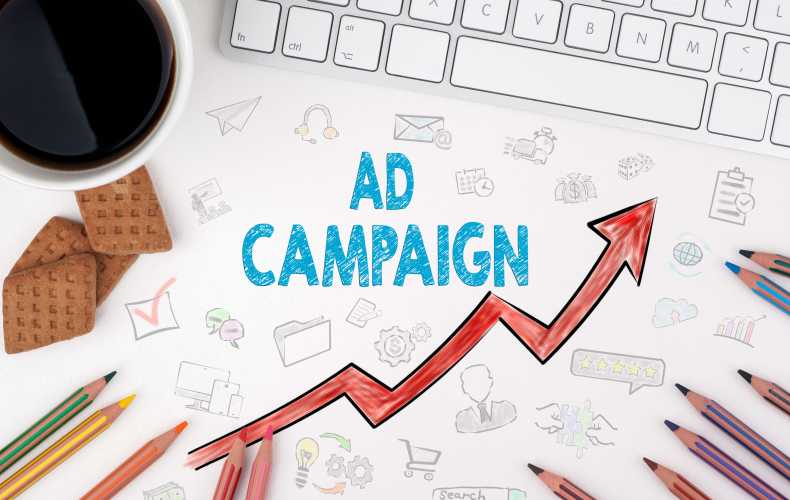6 Easy Ways to Improve Your Retargeting Ad Campaigns
in Marketing by Ling Wong

6 Easy Ways to Improve Your Retargeting Ad Campaigns
Retargeting, also known as remarketing, is a very effective type of digital advertisement in which audiences (possible consumers) are targeted with particular adverts based on their online behavior. In other words, retargeting tactics convert internet browsers into paying consumers for your company.
While we would love to live in a world where the majority of web visitors converted into customers, the reality is that the purchasing process is incredibly hard.
Whether you're new to retargeting advertising or a seasoned pro, these simple retargeted advertisement ideas can help you take your initiatives to the next level.
Recognize the buyer journey
Understanding the buyer path (or buyer cycle) is critical for any remarketing strategies. It's comparable to a sales funnel in that it starts with more consumers at the top in the initial stage and ends with far fewer individuals at the bottom in the conversion stage.
Retargeting is meant to catch more of those customers as they go down the funnel. However, disregarding the buy cycle might potentially harm conversion rates if you're not cautious. If marketers require one thing, it is a thorough grasp of their data and the efficiency of their marketing campaigns. That entails determining what works and what doesn't.
Enhance audience targeting
We've heard from several companies who begin their retargeting efforts by targeting everybody and everyone who visits their website.
Needless to say, that isn't always the most successful strategy. Customers visit your website for a variety of reasons. They go to various pages. The pages people visit show various purchase intentions. Perhaps they aren't interested in your goods at all.
The trick is to match your personalized advertising audiences to the intentions of those customers. For example, if you're an e-commerce firm and somebody visits your website looking for shoes, be sure to divide those visitors into a custom audience branded "shoe shoppers" or "footwear."
Keep an eye on the frequency of advertisements
Many advertisers don't think about the frequency of their ads, but it's something they should take into consideration in order to improve their overall success.
A recent study on retargeting ad sentiments in the United States discovered that ad frequency has a detrimental influence on buyer emotions.
A buyer's viewpoint quickly shifts from positive to negative when they see too many ads. It may be obtrusive, unpleasant, and, worst of all, it can make people furious with your brand. This will have an impact on present and future sales. Make sure your campaigns have some kind of ad frequency limitation.
Use Facebook Dynamic Creative Ads
You've definitely tried dynamic product advertising on Facebook, but what about dynamic creative advertisements.
Dynamic creative ads are an excellent advertising strategy since they eliminate the guesswork from your advertising material. You may submit several photos or videos, headline and description variants, and CTA button text – and Facebook will analyze and optimize for the best pairings.
It's worth noting that, because Dynamic Creative Advertisements only work with Conversions, App Install campaigns, and Traffic, these sorts of ads are best used near the middle and bottom of your sales pipeline.
Establish straightforward engagement campaigns
When you build up sequential engagement efforts, you are turning a broad audience into a smaller, more eligible audience. This differs from audience segmentation in that it is focused on those who engage with your content. It's an excellent approach to raise brand recognition while simultaneously pushing them through the sales funnel.
Suppose you own a small-to-medium-sized online business that offers one-of-a-kind hair treatments. Begin by promoting an organically successful video on Facebook or Instagram.
After a period, the views on that video will begin to accumulate. Put yourself in the shoes of your viewers. Consider what would be the next logical move if I saw this ad. Then, over the period of a few days to a few weeks, lay out your strategy.
Accept the emotional component of advertising
We all prefer to think of ourselves as reasonable shoppers who make sound and logical decisions, but this is only partially true. When it comes to purchasing items, our emotions have quite a lot to say.
A basic list of product attributes may persuade some customers' intellectual selves, but it has little influence on their emotional selves. Our emotional self isn't concerned with characteristics; instead, that part of us wants to see and envision the rewards.
In your advertisements, you must engage both the intellectual and emotional sides of potential buyers. Speak like a human being. Make use of emotional language. Discuss advantages rather than features. Help customers with imagining a life with your goods that they had no idea existed.




